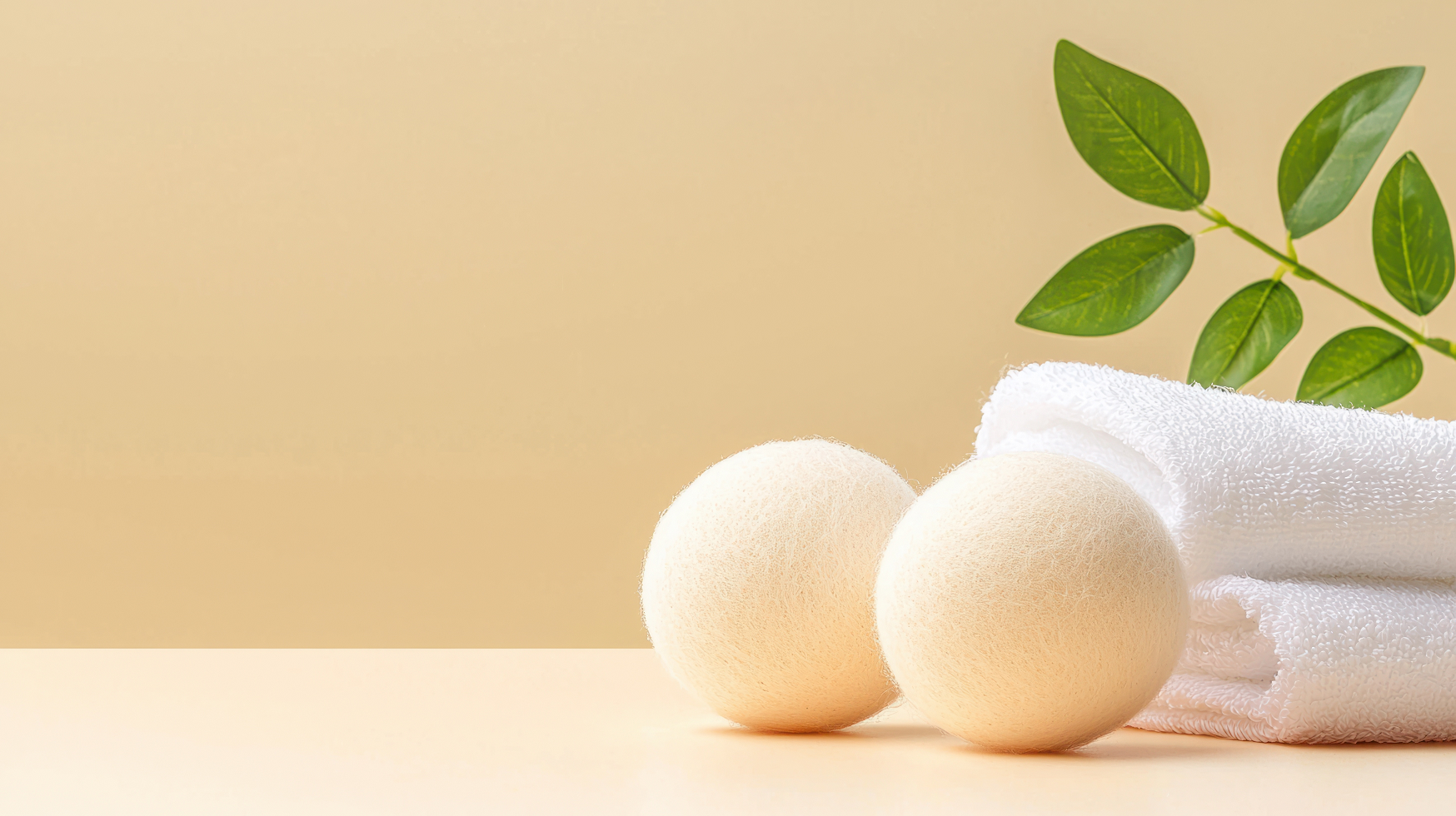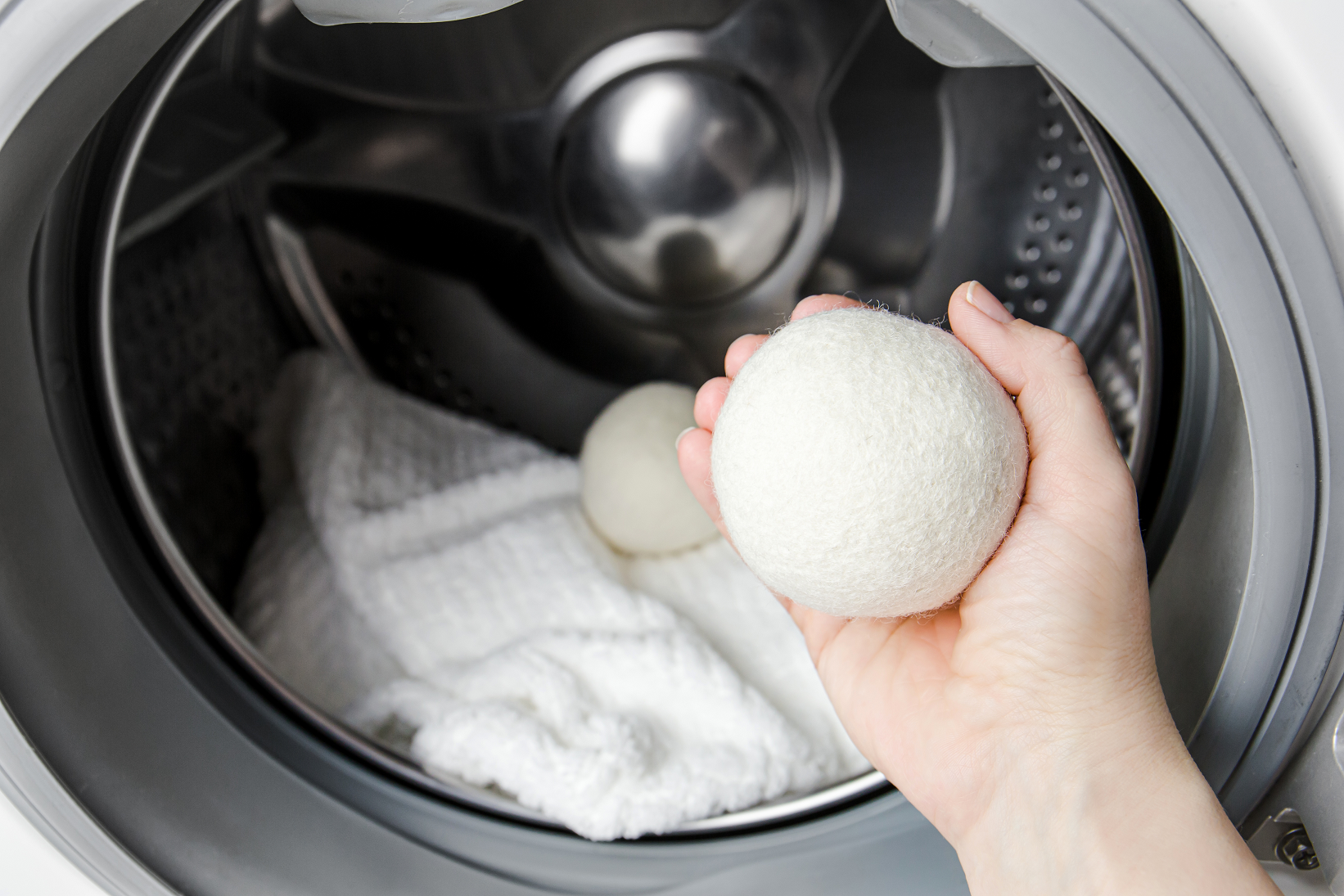How Do Dryer Balls Work?

If you've ever browsed through the laundry aisle or explored eco-friendly cleaning options, you’ve probably seen wool dryer balls touted as an alternative to dryer sheets. But how do they work, and why should you consider switching to them? Let’s dive into the science and benefits behind these simple yet effective laundry aids.
KEY TAKEAWAYS
- Wool dryer balls speed up drying time by separating laundry for better airflow, absorbing moisture, and reducing static. They also naturally soften fabrics without the need for chemical-based fabric softeners.
- Unlike single-use dryer sheets, wool dryer balls are reusable for up to 1,000 loads, making them a sustainable and budget-friendly laundry alternative.
- Made from natural materials, wool dryer balls are ideal for sensitive skin and can be infused with essential oils for a customizable, fresh scent without synthetic fragrances.

The Basics: What Are Wool Dryer Balls?
Wool dryer balls are dense, tennis ball-sized spheres made of 100% wool. They’re designed to be tossed into your dryer along with your wet laundry to improve drying efficiency and reduce the need for disposable dryer sheets or fabric softeners.
Unlike single-use products, wool dryer balls can last for hundreds of loads, making them both cost-effective and environmentally friendly.
How Do Wood Dryer Balls Work?
Wool dryer balls perform multiple functions that contribute to faster drying, softer clothes, and reduced static. Here's how they work:
Separation of Laundry Items
When you throw dryer balls into the drum, they bounce around during the drying cycle. This action helps separate clothing items, allowing hot air to circulate more freely. As a result, your laundry dries faster, which can save both time and energy.
Moisture Absorption
Wool is highly absorbent. During the drying process, the balls soak up some of the moisture from your clothes, further speeding up drying time. This is particularly helpful for thicker fabrics like towels and jeans.
Static Reduction
One of the biggest complaints about tumble drying is static cling. Dryer balls help reduce static by preventing clothes from sticking together. They work by maintaining separation and retaining a small amount of moisture, which helps neutralize static electricity.
Softening Fabrics
As the wool balls tumble through the dryer, they gently massage and fluff the fibers of your clothes, leaving them feeling soft without the need for chemical-based fabric softeners.
The Benefits of Wool Dryer Balls
Switching to wool dryer balls offers a host of benefits.
Eco-Friendly
Unlike dryer sheets, which are single-use and contribute to landfill waste, wool dryer balls can last for up to 1,000 loads. Additionally, they’re biodegradable, making them a sustainable choice.
Chemical-Free
If you have sensitive skin or prefer to avoid synthetic fragrances and chemicals, wool dryer balls are a great alternative. They’re made from natural materials and don’t release any harmful substances during use.
Energy Savings
By reducing drying time by 20–30%, wool dryer balls can lower your energy consumption and, in turn, your utility bills.
Customizable Scents
Want your clothes to smell fresh? Add a few drops of your favorite essential oil to the dryer balls before tossing them in. This gives your laundry a pleasant scent without the need for artificial fragrances.

Tips for Getting the Most Out of Wool Dryer Balls
- Use the Right Number of Balls: For small to medium loads, use 3-4 balls. For larger loads, use 5-6 to maximize effectiveness.
- Refresh the Wool Balls: If your dryer balls start to lose their effectiveness, you can refresh them by washing and drying them with a load of laundry. This helps maintain their shape and performance.
- Store Dryer Balls Properly: Keep your dryer balls in a dry, well-ventilated area to prevent them from absorbing excess moisture between uses.
- Maintain Your Dryer: Schedule professional dryer maintenance yearly to keep your clothes dryer in top shape and working efficiently so the wool dryer balls will work effectively. If you notice heating problems or experience long dry times, schedule dryer repair immediately to get your dryer fixed.
Are Wool Dryer Balls Right for You?
Wool dryer balls are an excellent option for anyone looking to simplify their laundry routine, reduce energy consumption, and eliminate waste. Whether you're committed to sustainability or just curious about alternative laundry solutions, they’re worth a try.
Next time you’re folding laundry, consider the benefits of these little woolen wonders. They may just transform the way you dry your clothes—and help you do your part for the planet.
Schedule your dryer maintenance now!
Keep your dryer working efficiently and lasting longer with regular professional maintenance.
Was this information helpful?
Schedule your dryer maintenance now!
Maintain Dryer Resources
Learn how a clothes dryer works and how to use and maintain this appliance.
Learn how clothes dryer sheets work and how to maximize their effectiveness.
Discover 6 expert tips to clean your dryer in 2025 and keep it running smoothly. Trust Sears Home Services for all your appliance maintenance needs.
Discover the 10 reasons why dryer sheets are bad. Protect your family from harmful chemicals. Learn more at Sears Home Services.
Glossary Terms
Natural gas is a fossil fuel used primarily for heating, cooking, and electricity generation. It's a hydrocarbon gas mixture consisting mainly of methane, but it also contains smaller amounts of other hydrocarbons and sometimes sulfur compounds.
A gas dryer is a laundry appliance that uses natural gas or propane to generate heat to dry clothes.
A freezer bag is a specially designed plastic bag used for the cold storage of food in the freezer, offering protection against freezer burn and preserving the food's freshness and flavor over extended periods.
A furnace filter is a component installed in HVAC systems to trap and remove dust, pollen, and other airborne particles from the air, enhancing indoor air quality and protecting the furnace's inner workings.
Common Repair Dryer Symptoms
The most common reasons your Whirlpool dryer won't turn off are an open heating element, defective electronic control board or a failed thermistor.
The most common reasons your Whirlpool dryer won't start cycle are a faulty thermal fuse, failed door switch or a broken drum belt.
The most common reasons your Whirlpool dryer won't heat up are an open heating element, failed thermal cut-off fuse or a defective electronic control board.
The most common reasons for a Whirlpool dryer will not come on issue are a faulty thermal fuse, a failed door switch, or a broken drum belt.
The most common reasons your Whirlpool dryer takes 3 cycles to dry are an open heating element, a clogged vent tube, or a faulty thermal fuse.
The most common reasons your Whirlpool dryer stopped working are an open heating element, faulty thermal fuse or a worn drum bearing.



